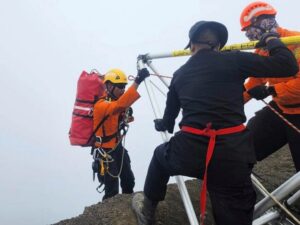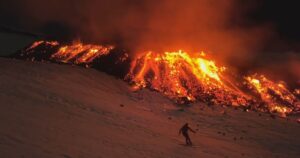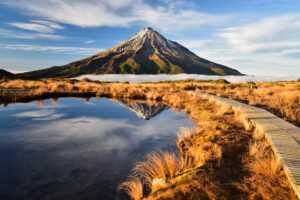Being a modern volcanologist is no walk in the park, what with the tendency of volcanoes to occasionally spray molten rock all over the place. But studying the things in the Victorian age — when observation required a degree of proximity that would make mere mortals like you and I extremely uncomfortable — that’s on a whole different level.
One such maniac/dedicated scientist was Luigi Palmieri, the subject of a recent profile in Scientific American. Born in 1807, Palmieri dabbled in the worlds of physics, mathematics, and philosophy. But like any good Victorian scientist, his curiosity was insatiable, and it wasn’t long before he found himself as the director of the Vesuvius Observatory, a post he held for 41 years.
During his time on the side of Mt. Vesuvius, he survived five eruptions, invented a host of new instruments to measure volcanic activity, and challenged the long-held belief that volcanoes erupted spontaneously and unpredictably.

Mt. Vesuvius is tranquil now, but in Palmieri’s day, it was quite active. Photo: Shutterstock
“He was a measurer,” Francesca Bianco, the observatory’s director until July 2022, told Scientific American. “He had grasped the fundamental importance of measurements at a time when volcanology was dominated by rather qualitative methods.”
Palmieri’s best and most long-lasting contribution to science was the invention of a device that would become the electronic seismograph. The gadget could record important data about earthquakes and tremors not detectable by humans. He installed the first one at the observatory in 1856 and continued making modifications throughout his life.
As the years progressed, Palmieri began using two other electronic seismographs placed at strategic locations around Italy to triangulate the epicenter of seismic activity. His technique would form the basis for how scientists study earthquakes to this day.
A lifetime of close calls
As noted at the top of the story, volcanology in the Victorian age wasn’t just staring at instruments. Palmieri observed eruptions in 1855, 1859, 1861, 1868, and 1871–1872. Several of those eruptions resulted in close calls for the plucky Italian.
In 1859, his fellow scientists thought he’d perished while dodging flying magma boulders. In 1872, he remained the sole scientist in the observatory as an eruption heated the surroundings to scalding temperatures. Once again, colleagues assumed he was dead. But he emerged with new data and a seeming disregard for the danger he’d been in.

A statue of Luigi Palmieri in Faicchio, Benevento, Italy. Photo: Wikimedia Commons
The scientist passed away at the age of 89 in 1896 — from a condition of his bronchial lining and not, as you might imagine, from getting smacked by volcanic pyroclast.
He left behind a lasting contribution to the scientific world, as well as a legacy of adventure science not much in demand these days. He also had five children, and while that isn’t a scientific accomplishment, it’s still quite a feat for a man who spent most of his life living on the side of an active volcano.





